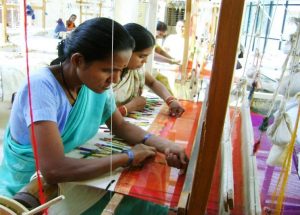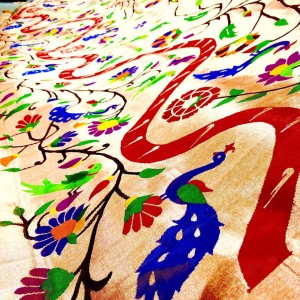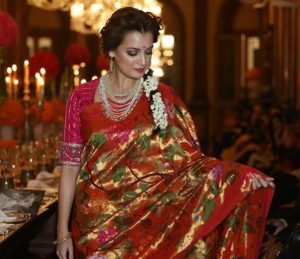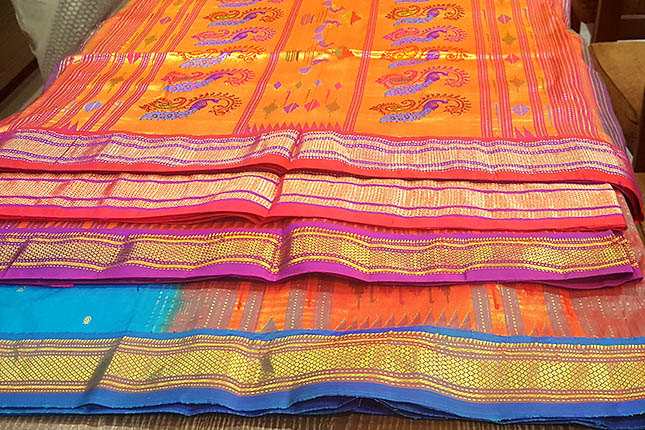Paithani is the name of the saree name after the town ‘Paithan’ of Aurangabad, Maharashtra state. This hand-woven, state -of -art technique was, in fact, a tapestry weaving technique that later came into being used in sarees.
Introduction to Paithani Brocade
Earlier they used to be woven from China silk and locally made zari made from gold and silver thread. A genuine handloom uses 500 grams of silk and 250 grams of zari thread for a regular 6-yard saree.
The weight of 9-yard sarees can go up to 900 grams. It dates back to Satvahana dynasty between 2nd century BC and 2nd century AD.
Raw silk threads are dyed with natural compounds obtained from vegetable oils, minerals, plants, and mineral rocks which are then transferred to reels for looming.
PROCESS OF WEAVING
The looming process is quite intricate and most important as it defines the design, color and detailing of the final product.
Then comes the most laborious part of weaving that might take from few days to months and even a year. Colors are chosen to be used for length and width combination.
Thus, the craftsmanship a saree tends to play with a range of colors, thus seeming to change its color in daylight.

UNIQUE FEATURES
An interesting part about Paithani handloom is that both the side mirror each other. While the body features Butis, the highlight is always the border and the pallu, thus imitating each other. Another striking feature is that it resists folds thus avoiding wear out and never loses its luster.
Brocade Paithanis have an intricate design of forty inch pallu and require a lot of skill. They are an ensemble of vases and pots sandwiched between the pattern of the border.
The jari is silver complimented with gold. The quality of jari depends on who make Paithani as many weavers don’t use silver in most expensive and highest quality brocade.

Butis are commonly dollar or paisa are woven and applied manually.
A weft is woven from the inner edge of upper and lower borders thus adding another shuttle to be completed from one weft of the thread.
IDENTIFICATION
- Paithani sarees are made of silk thread and zari that resemble each other. If you find threads in reverse then it’s not a genuine Paithani work.
- Commonly woven motifs include peacock, parrots, lotus, flowers, and vines.
- Paithanis are found only in basic colors such as yellow, red, green, purple, magenta, and peach-pink.
- Because of the manual nature of the work, no two Paithanis are the same.
These are like jewels passed on from one generation to the next which tend to cost anywhere between Rs. 7,000 to Rs. 250,000. Bridal sarees often have precious gems and stones embedded in the fabric.

Unfortunately, the industry experienced a setback with the onset of the industrial revolution and the advent of British rule.
But, the 17th century saw the uprising of the same due to Peshwas who relentlessly went on to promote this artisanship and consequently settled the weavers in Yeola, which is the manufacturing hub of the brocade. This was more or less like a boon of life for the dying culture.
But, nowadays, the power looms tend to produce the same effect at much-lowered cost but charge the same from the customers.
This becomes unfair for the craftsmen and does injustice to their labor. It is our responsibility to know the differences and promote the much deserved, thus promoting the laudable.




